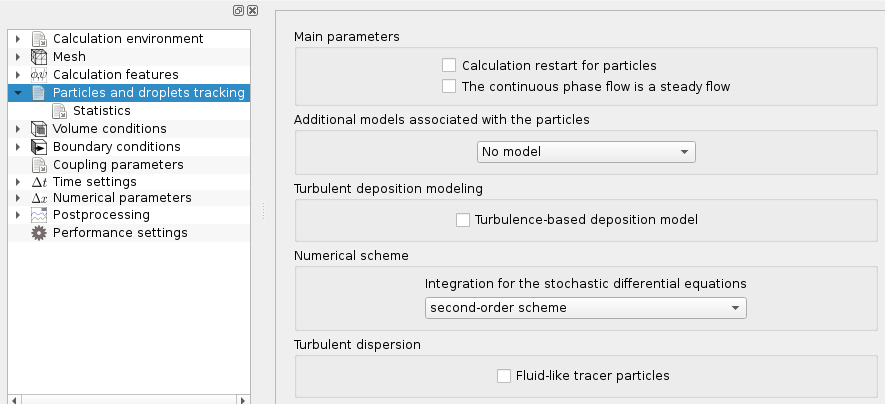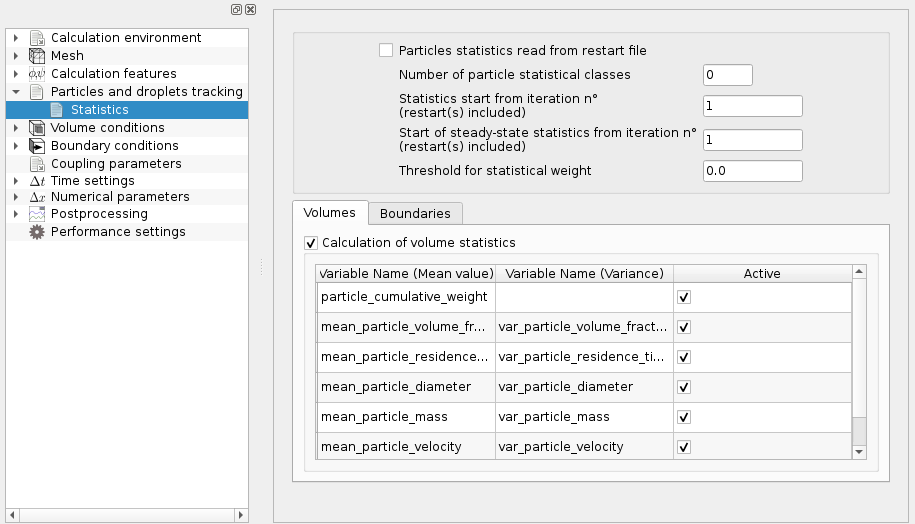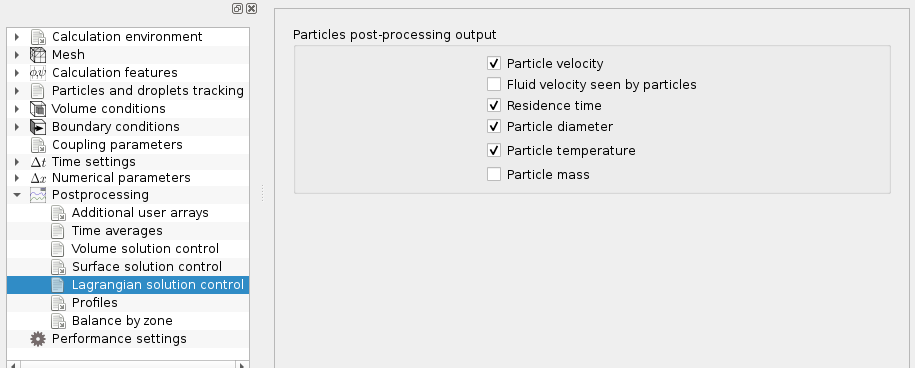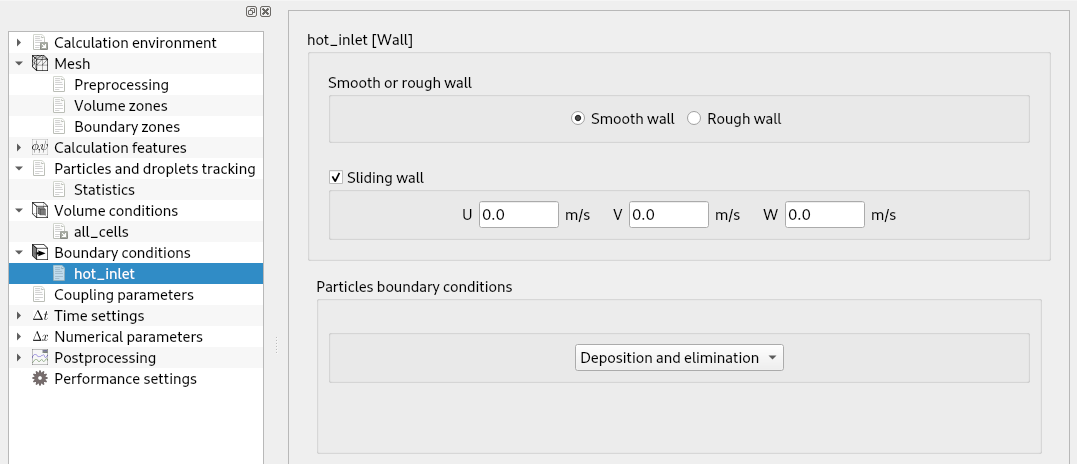The activation of the particle-tracking module is performed either:
Except for cases in which the flow conditions depend on time, it is generally recommended to perform a first Lagrangian calculation whose aim is to reach a steady-state (i.e. to reach a time starting from which the relevant statistics do not depend on time anymore). In a second step, a calculation restart is done to calculate the statistics. When the single-phase flow is steady and the particle volume fraction is low enough to neglect the particles influence on the continuous phase behaviour, it is recommended to perform a Lagrangian calculation on a frozen field.
It is then possible to calculate steady-state volumetric statistics and to give a statistical weight higher than 1 to the particles, in order to reduce the number of simulated (numerical) particles to treat while keeping the right concentrations. Otherwise, when the continuous phase flow is steady, but the two-coupling coupling must be taken into consideration, it is still possible to activate steady statistics. When the continuous phase flow is unsteady, it is no longer possible to use steady statistics. To have correct statistics at every moment in the whole calculation domain, it is imperative to have an established particle seeding and it is recommended (when it is possible) not to impose statistical weights different from the unity.
Finally, when the so-called complete model is used for turbulent dispersion modelling, the user must make sure that the volumetric statistics are directly used for the calculation of the locally undisturbed fluid flow field.
When the thermal evolution of the particles is activated, the associated particulate scalars are always the inclusion temperature and the locally undisturbed fluid flow temperature expressed in degrees Celsius, whatever the thermal scalar associated with the continuous phase is (i.e. temperature or enthalpy). If the thermal scalar associated with the continuous phase is the temperature in Kelvin, the unit is converted automatically into Celsius. If the thermal scalar associated with the continuous phase is the enthalpy, a temperature property or postprocessing field must be defined. In all cases, the thermal backward coupling of the dispersed phase on the continuous phase is adapted to the thermal scalar transported by the fluid.
In the GUI, the selection of the Lagrangian module activates the heading Particle and droplets tracking in the tree menu. The initialization is performed in the three items included in this heading:



When the GUI is not used, cs_user_lagr_model must be completed. This function gathers in different headings all the keywords which are necessary to configure the Lagrangian module. The different headings refer to:
For more details about the different parameters and some examples, the user may refer to examples
In the framework of the multiphase Lagrangian modelling, the management of the boundary conditions concerns the particle behaviour when there is an interaction between its trajectory and a boundary face. These boundary conditions may be imposed independently of those concerning the Eulerian fluid phase (but they are of course generally consistent). The boundary condition zones are actually redefined by the Lagrangian module (boundary zones), and a type of particle behaviour is associated with each one. The boundary conditions related to particles can be defined in the Graphical User Interface (GUI) or in the cs_user_lagr_boundary_conditions.c} file. More advanced user-defined boundary conditions can be prescribed in the cs_user_lagr_in function from cs_user_lagr_particle.c}.
In the GUI, selecting the Lagrangian module in the activates the item Particle boundary conditions under the heading Boundary conditions in the tree menu. Different options are available depending on the type of standard boundary conditions selected (wall, inlet/outlet, etc...), see Figure 3.

In this section, some information is provided for a more advanced numerical set-up of a particle-tracking simulation.
An adaptation in the cs_user_lagr_sde function is required if supplementary user variables are added to the particle state vector for more explanation see SDE within the Lagrangian model.
If necessary, the thermal characteristic time 
The particle relaxation time may be modified in the cs_user_lagr_rt function according to the chosen formulation of the drag coefficient. The particle relaxation time, modified or not by the user, is available in the array taup see Calculation of the particle relaxation time for examples
The particle thermal characteristic time may be modified in the cs_user_lagr_rt_t function according to the chosen correlation for the calculation of the Nusselt number see Computation of the thermal relaxation time of the particles for examples.